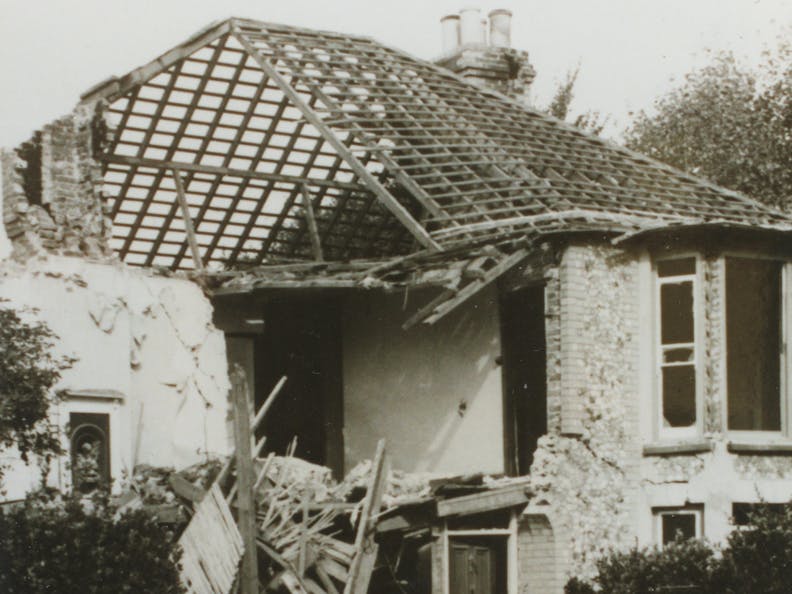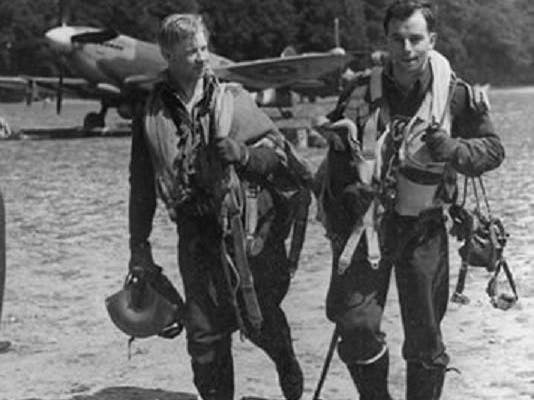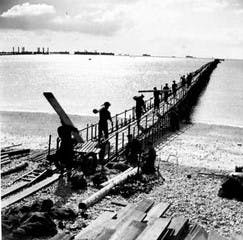Selsey's D-Day Legacy
Selsey's Secret Wartime Story: Honouring Our D-Day Legacy.

Much of Selsey’s wartime story has been hidden over time—some of it even lost to the sea—but its importance is undeniable. It may be hard to imagine now, but during WWII, Selsey endured more air raids than anywhere else in Sussex. Over 1,300 buildings were damaged. Back then, Selsey wasn’t the lively seaside town we know today, but a small, close-knit village with a big heart. The community’s spirit and resilience truly shone through in those darkest of days.


Selsey played a significant role in the lead-up to D-Day. In 1943, an Advanced Landing Ground was set up in the fields near Norton Corner. RAF squadrons camped under canvas there, including the 135 Squadron flying Spitfires. These pilots provided vital air cover on D-Day itself. One of them, Squadron Leader John 'Johnnie' Houlton, who was based right here in Selsey, was awarded the Distinguished Flying Cross for his bravery—he even brought down a Nazi bomber over Omaha Beach.

Elsewhere in the town, Selsey’s Park Estate was made off-limits to civilians. Canadian and American troops were billeted in several of the estate’s bungalows as they prepared for the invasion. Selsey also became a key site for the construction of the enormous ‘Phoenix Caissons’, which formed part of the famous Mulberry Harbours.
In May 1944, none other than Prime Minister Sir Winston Churchill visited Selsey to inspect the caisson works and held a meeting in a railway carriage house on Park Lane. In a letter, he famously wrote: "They must float up and down with the tide… Don’t argue the matter. The difficulties will argue for themselves." The day after the D-Day landings, these giant harbours were towed 100 miles across the Channel to create a temporary port the size of Dover. Their role in supporting the Allied invasion was absolutely crucial.


One Selsey resident from that time, the late Vera Buxton-Knight, recalled the secrecy surrounding the build-up. She wrote: "The Royal Regiment of Artillery installed several batteries of heavy anti-aircraft guns around the north-east of Selsey and Church Norton. Residents were issued military passes, but local fishermen weren’t allowed near the sea in that area. Just before D-Day, all signs of the construction works suddenly vanished. We had no idea what had been going on until much later, when we learned it had all been built by ‘Official Boffins’ from the Royal Engineers and the Royal Navy." Eighty years on, just off Selsey’s coast, in ten metres of water, lies one of the original Phoenix caissons—lost to a storm the night before D-Day.
It now rests alongside other historic wrecks, forming what is now known as the D-Day Heritage Trail. This unique underwater site attracts divers from across the UK and beyond, blending Selsey’s rich wartime past with its spectacular marine life.
Selsey's Commemoration of D-Day at East Beach Green
On 6th June 2024, Selsey Town Council hosted a Civic Ceremony to mark the 80th Anniversary of D-Day, honouring those who lived, served, and sacrificed. The evening culminated in the lighting of the Beacon and featured opening and closing words from Rev. Andrew Wilkes of St Peter’s Church, three hymns, and music by Chichester City Band. Standard Bearers from the Royal Naval Association, RNLI, Selsey Coastguard, 461 (Chichester) Squadron ATC, Selsey Scouts, Selsey Girl Guiding, and Selsey Victory Club attended, alongside Selsey Fire Service. Their courage helped shape the freedoms we enjoy today, and their legacy lives on in this remarkable town we are proud to call home.